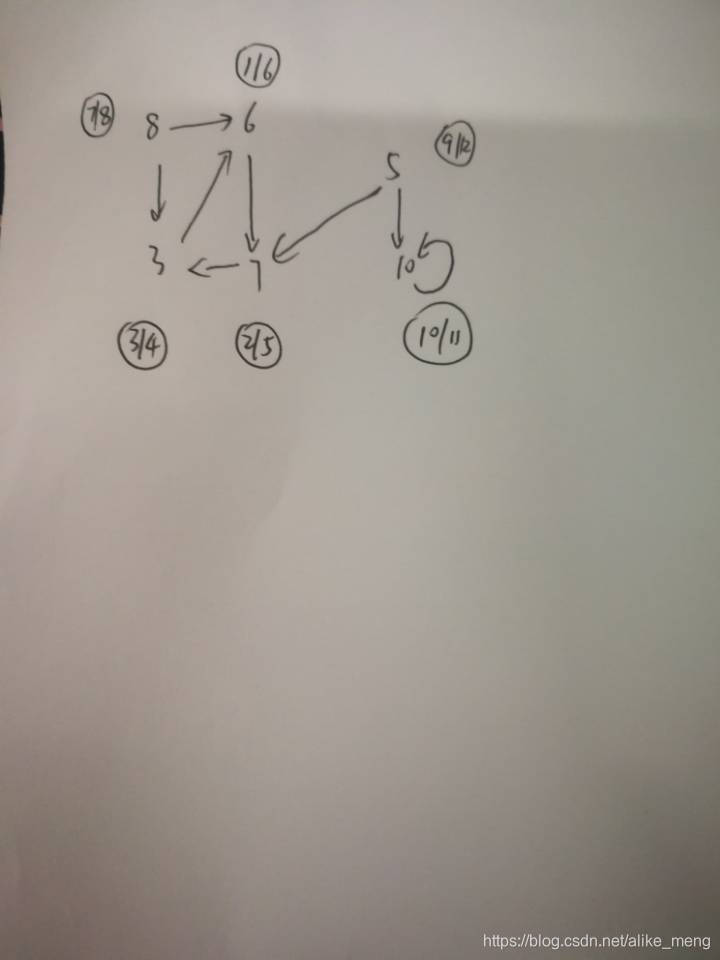有向圖鄰接矩陣深度優先搜尋
阿新 • • 發佈:2018-11-17
上一個文章是寫的無向圖和鄰接連結串列的廣度搜索,深度搜索就用矩陣和有向圖了。
矩陣處理起來還是會比連結串列簡單一些。
先分析資料結構:
1.儲存所有結點的集合用到了一個單向迴圈連結串列,為什麼要用迴圈連結串列呢,因為在儲存結點資料的時候是按照輸入資料的順序來儲存的,如果是用一個數組或者單向連結串列,我們可以得到陣列或連結串列第一個元素作為源節點的遍歷,但是我要是指定陣列中的第三個元素作為源節點呢。這樣就不太好操作了,所以用了一個迴圈的連結串列,先把指標移到指定的任意一個源節點作為表頭再繼續操作。
其他的就是普通的二維陣列結構體等沒什麼特別的了。
注意:
結點的輸入順序還是得記一個位置,因為二維陣列是按那個順序建立的,有一個position可以把二維陣列和連結串列一一對應起來。
其實很難一次性不出問題,我一般第一次執行都是得不到結果或者只得到部分結果。但是隻要會除錯,其他的都不是什麼問題了,特別是main函式是一個一個處理的,每個函式都是一次一次呼叫的,在除錯的時候哪裡出問題了會很明顯。
還有就是最近發現的一個小skill,在定義結構體的時候可以把key啊這類的明顯的不同的變數先定義,在除錯的時候就能先顯示看到它。
下面程式碼看函式名基本就知道是在幹嘛,註釋寫的有點少將就看一下。
#include "stdafx.h"
#include<stdio.h>
#include<stdlib.h>
#define N 6 //plane to create a 6*6 matrix
int time; //the whole proccess's time
int n = 0;
typedef enum Color{ W, G, B }Color;
typedef struct vertex_ *vertex;
typedef struct vertex_
{
int key;
int d; //start time
int 

